Complete guide to the highlights of Nagoya Castle Ninomaru Garden
English | Japanese
The lord of the Owari Domain lived in the Ninomaru Palace, and the garden built on its north side is the Ninomaru Garden. The Ninomaru Garden is broadly divided into the Maeniwa, the Kitaoniwa, and the Ninomaru East Garden. The extensive grounds include a tea house, garden pond, and artificial hills, with almost the entire area designated as a Meisho. This article introduces the highlights of the Nagoya Castle Ninomaru Garden.
For a comprehensive overview of the entire Nagoya Castle, please refer to 「Highlights and access methods of Nagoya Castle (Aichi Prefecture)」.

(Last modified: )
Table of contents
Kitaoniwa
Kitaoniwa is the central area of Ninomaru Garden, and includes three artificial mountains and a garden pond.
Sazaeyama
This is Sazaeyama. It is thought that the name came from the shape of the garden path built into the mountain, resembling a conch shell.
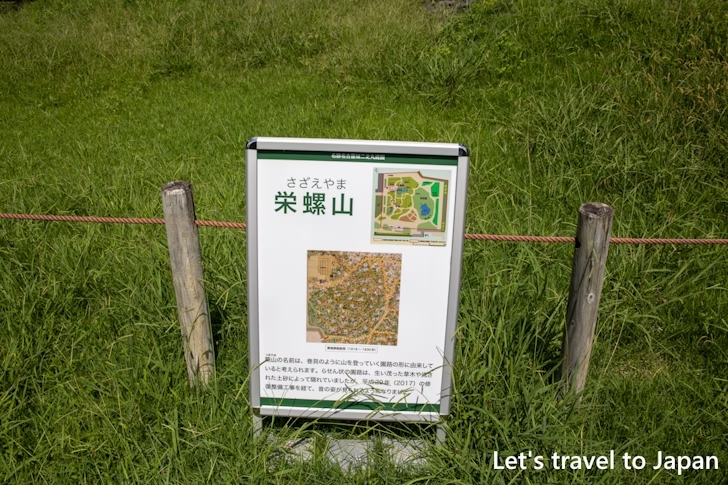
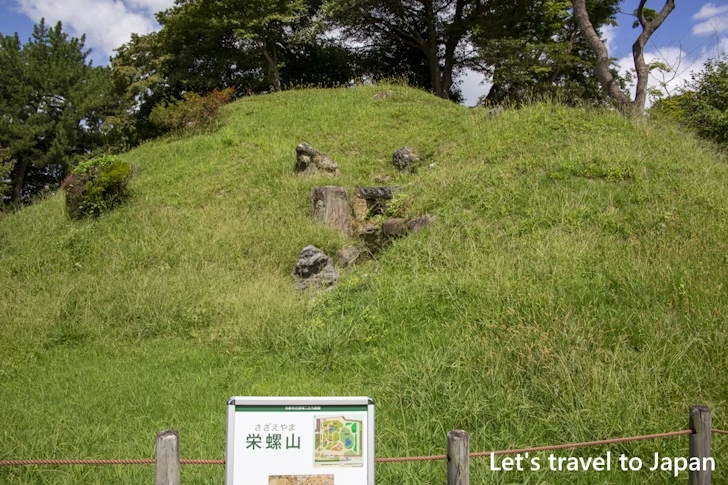
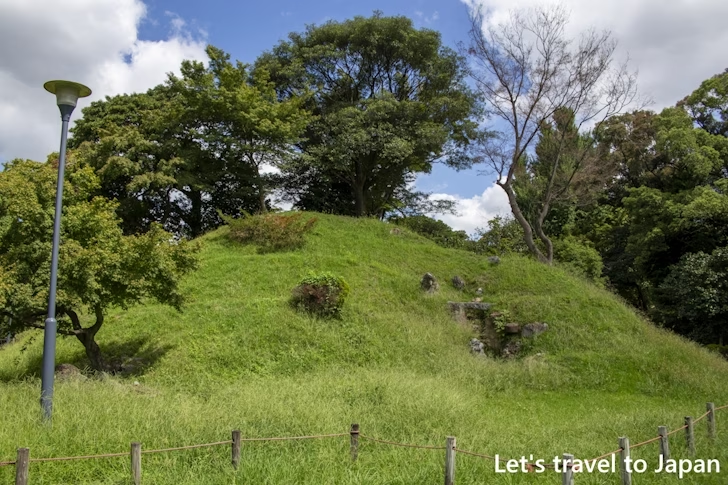
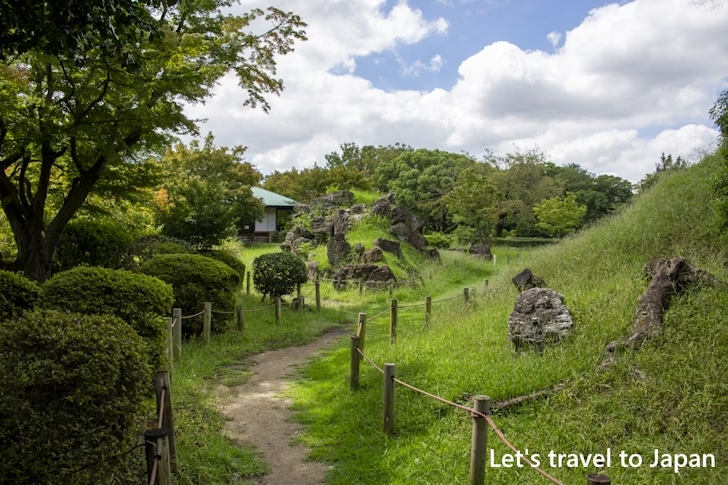
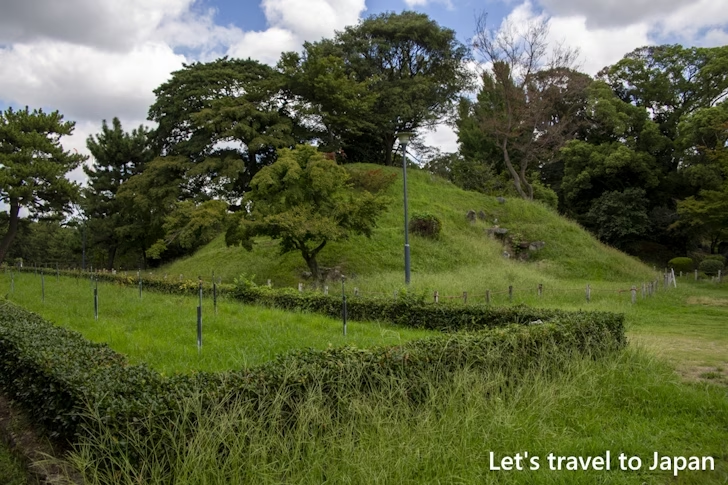
Futagoyama
This is Futagoyama.
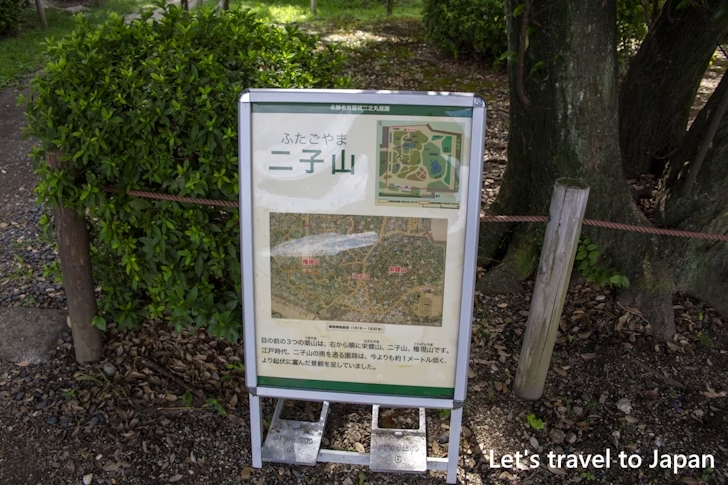
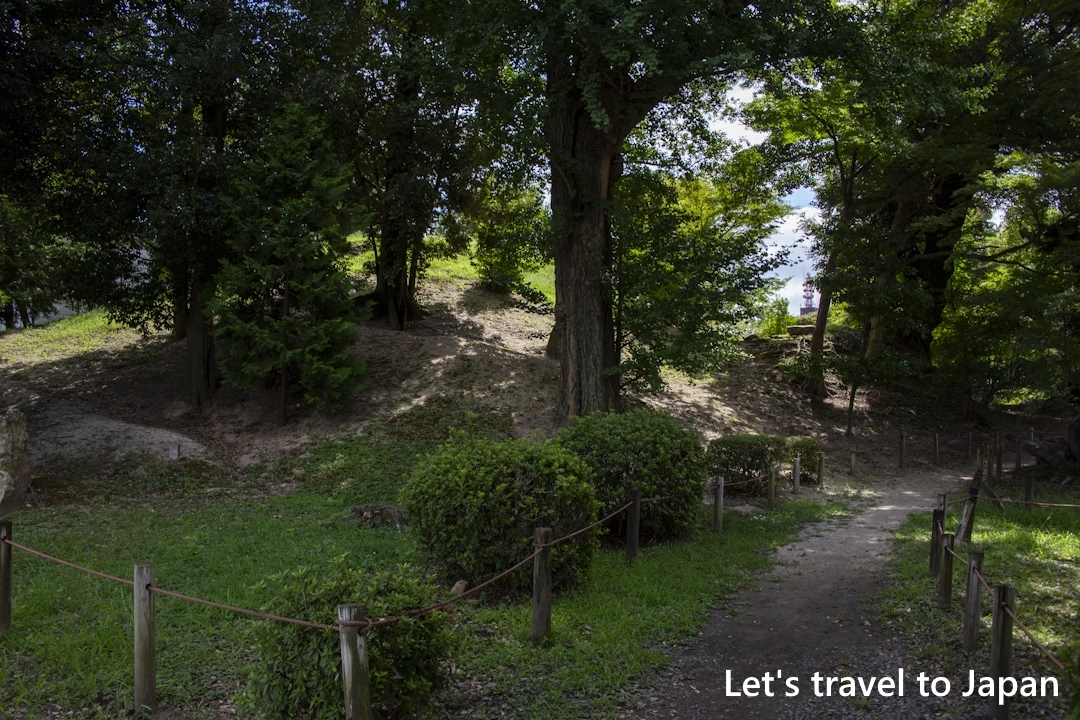
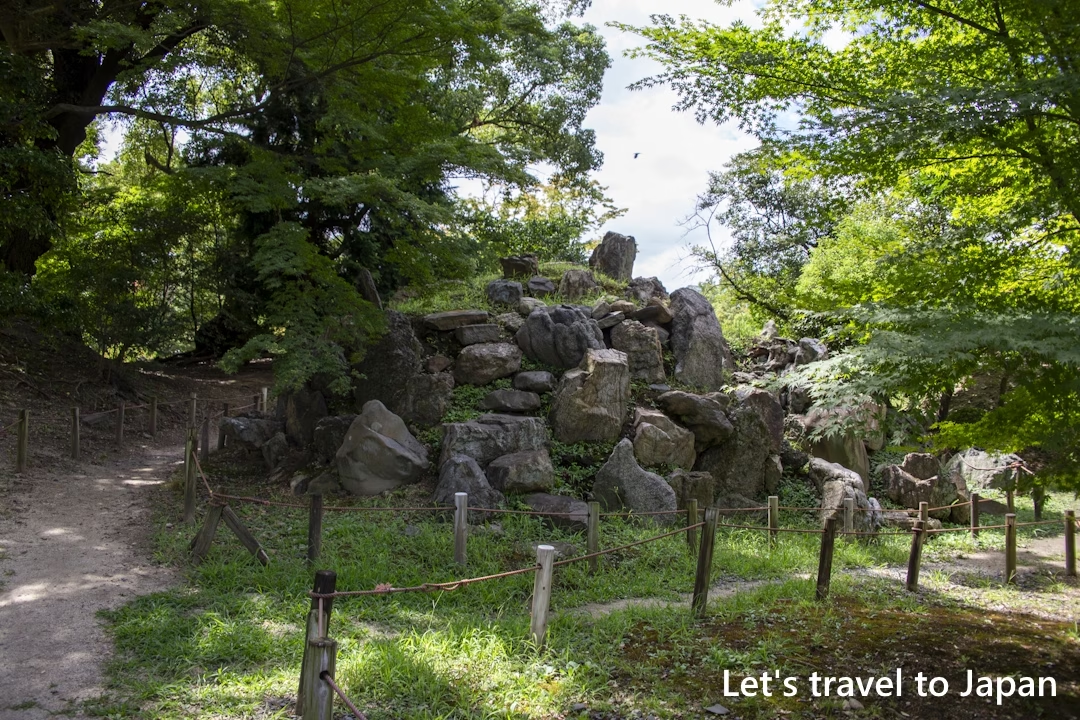
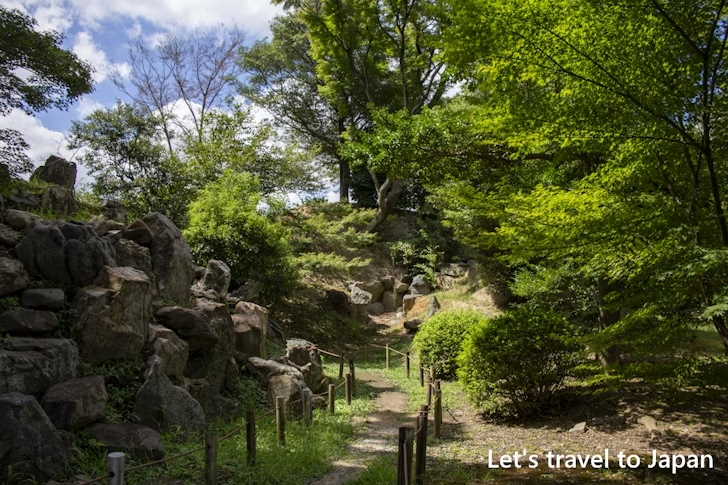
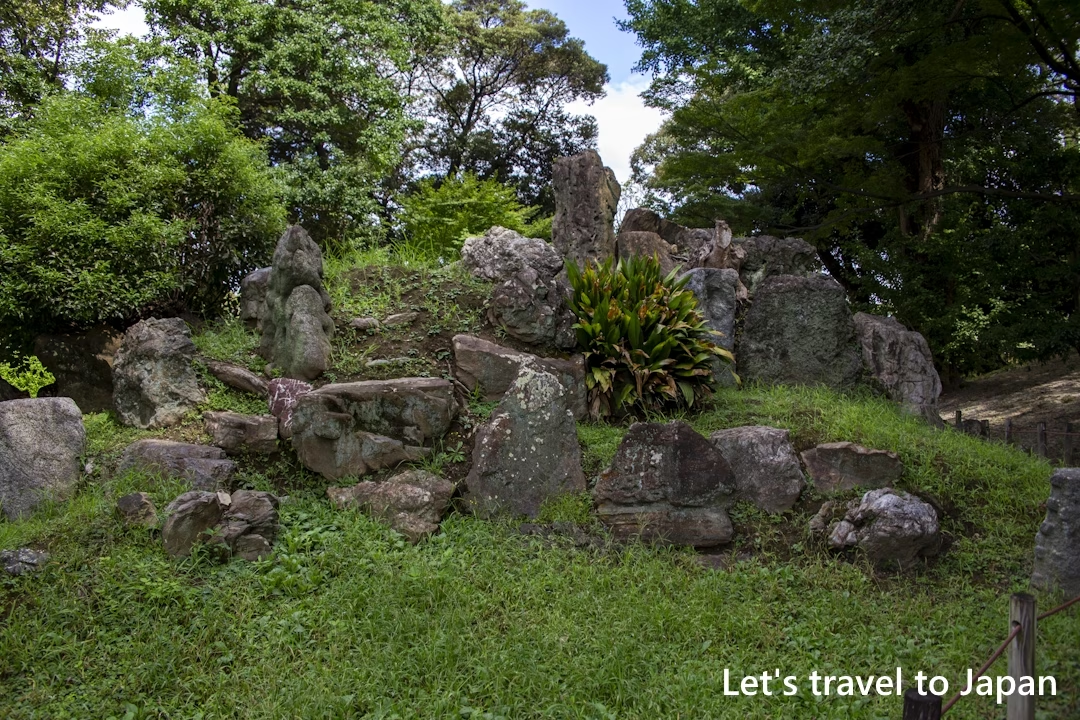
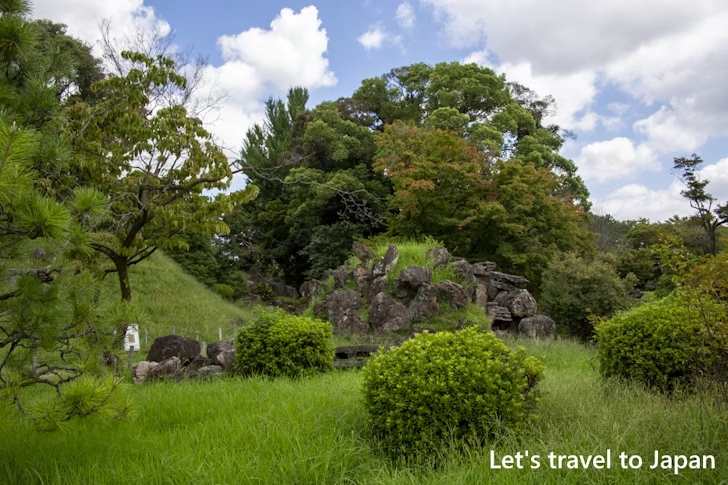
Gongenyama
This is Gongenyama. It is the highest mountain in Ninomaru Garden, and although it is currently not possible to climb it, there is a shrine at the top.
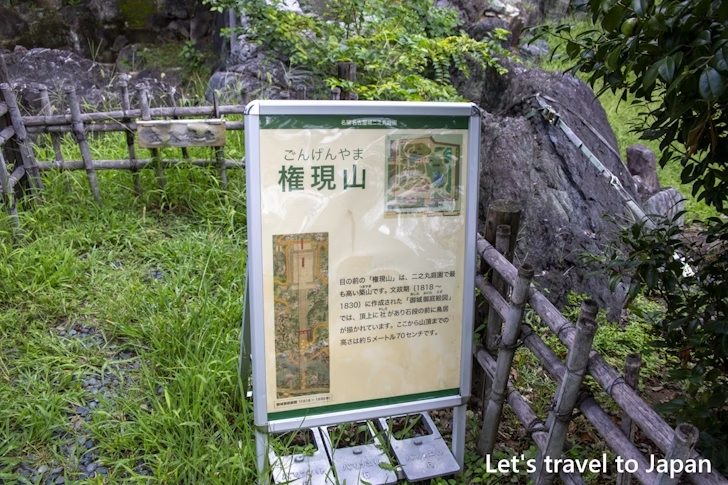
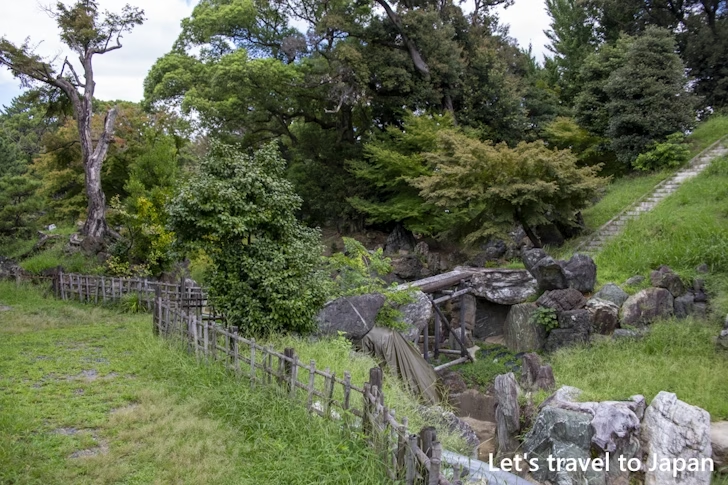
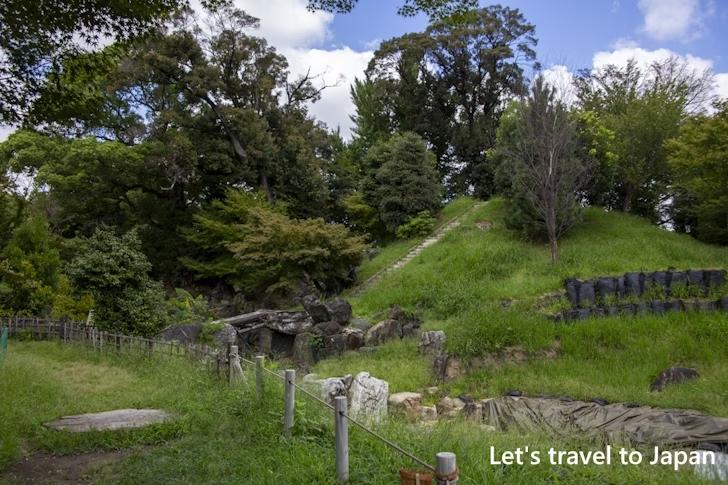
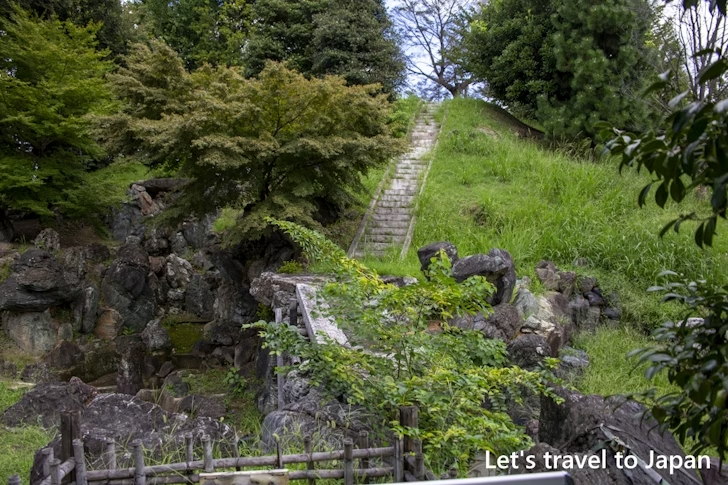
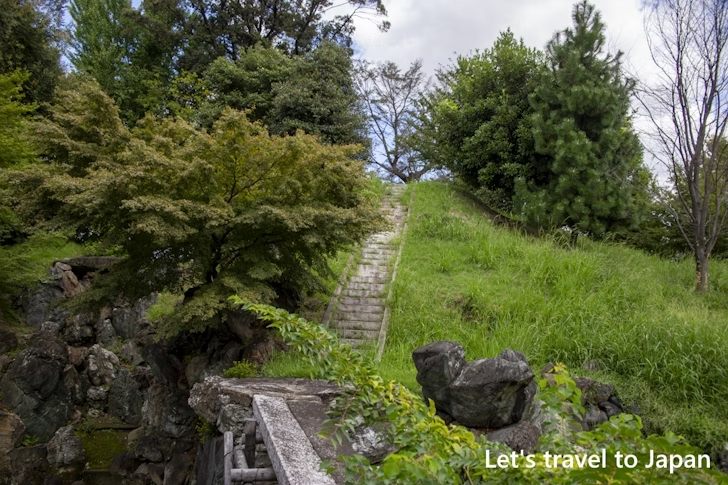
Kitaenike
Kitaenike retains most of the topography created during the Edo period, and is characterized by the pond, which is dug 3m30cm deep, and the surrounding stonework.
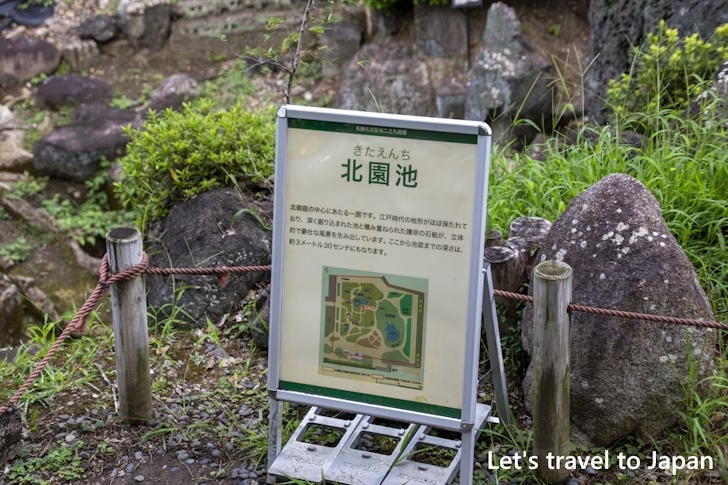
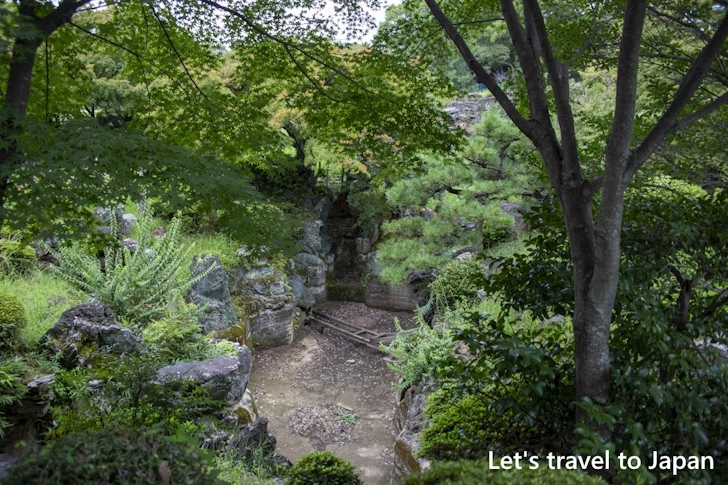
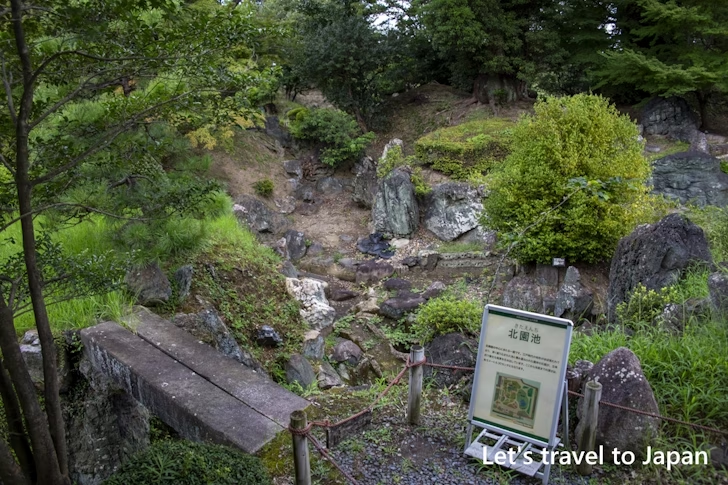
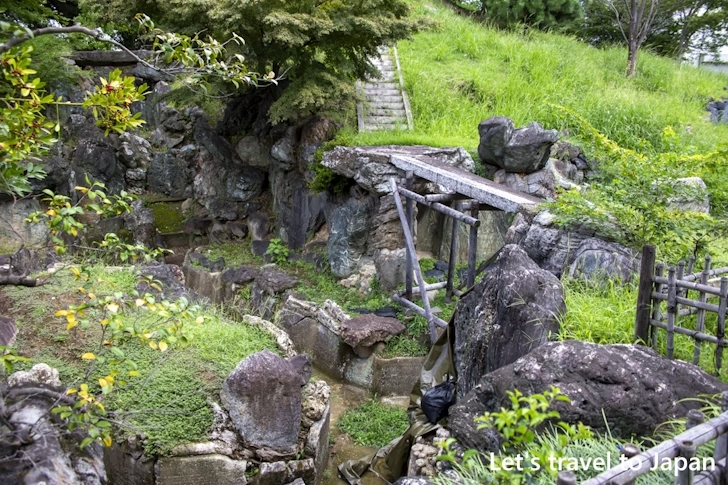
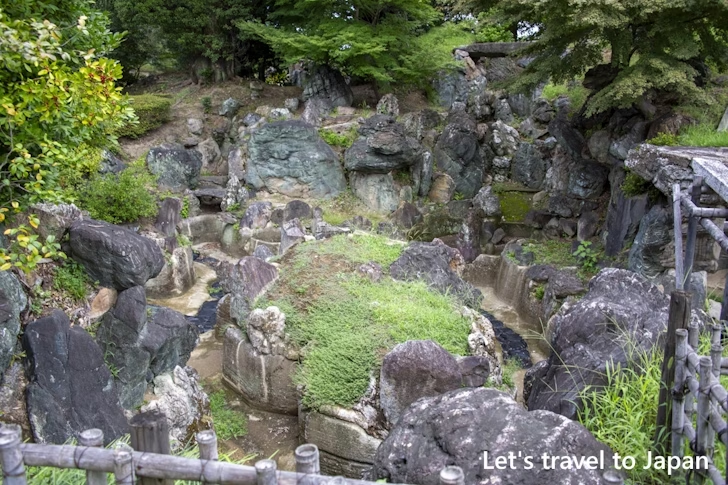
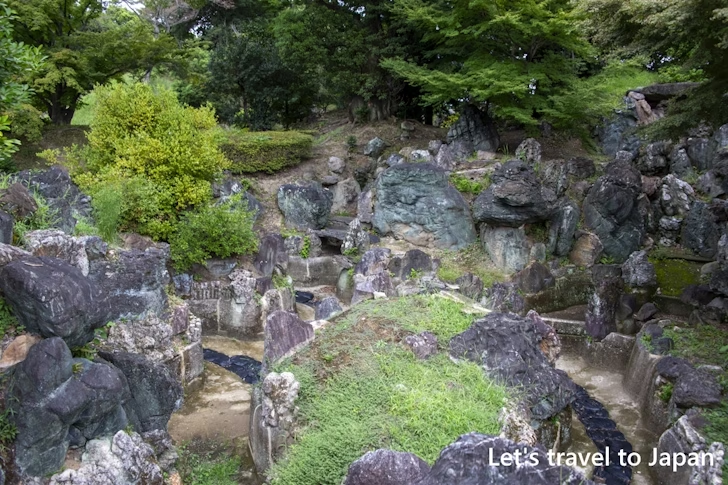
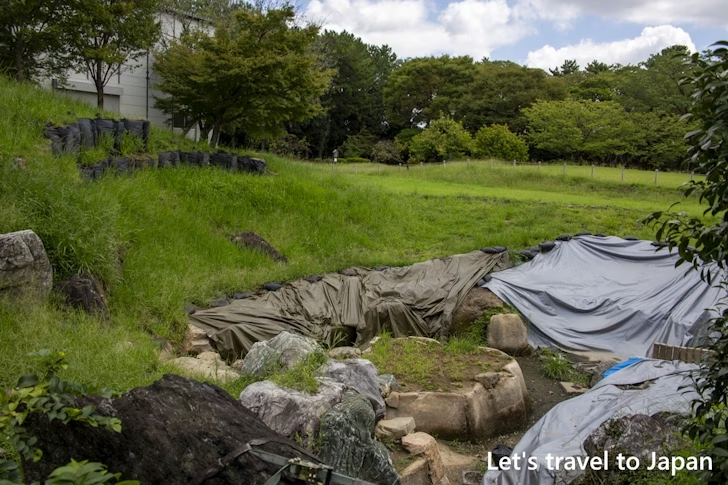
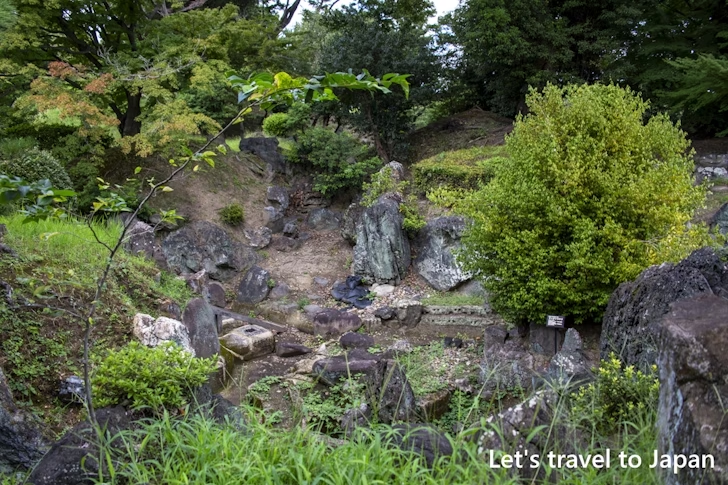
Maeniwa
The Maeniwa was built during the Meiji period as a front garden for the army officer assembly hall.
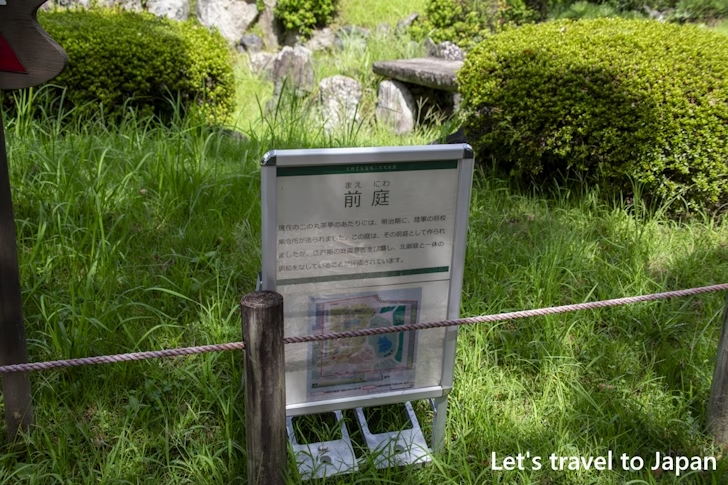
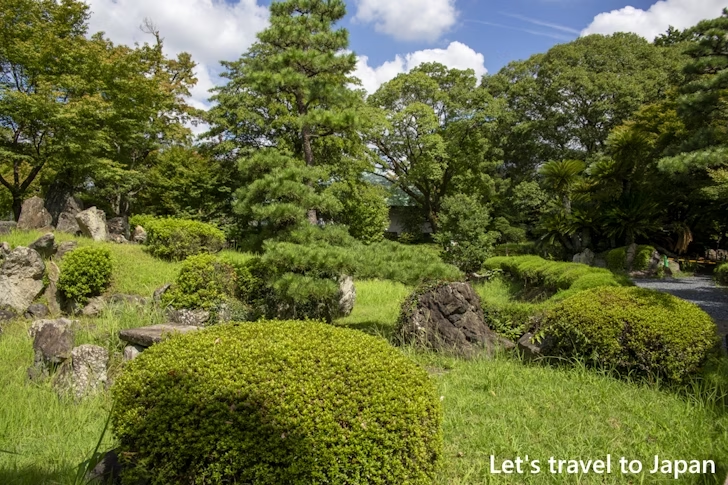
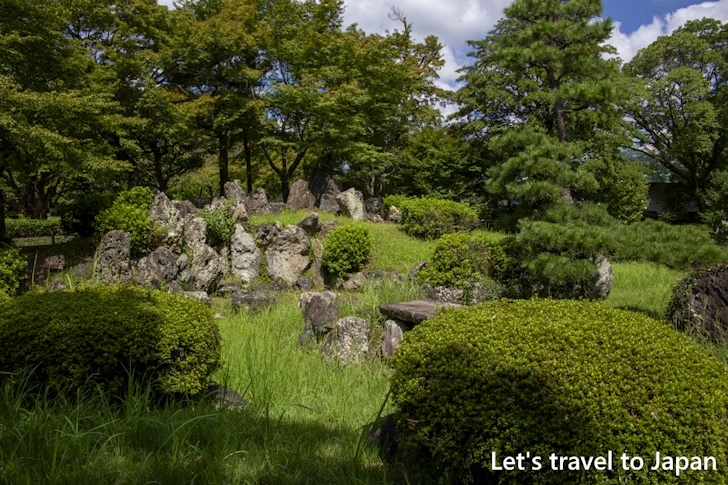
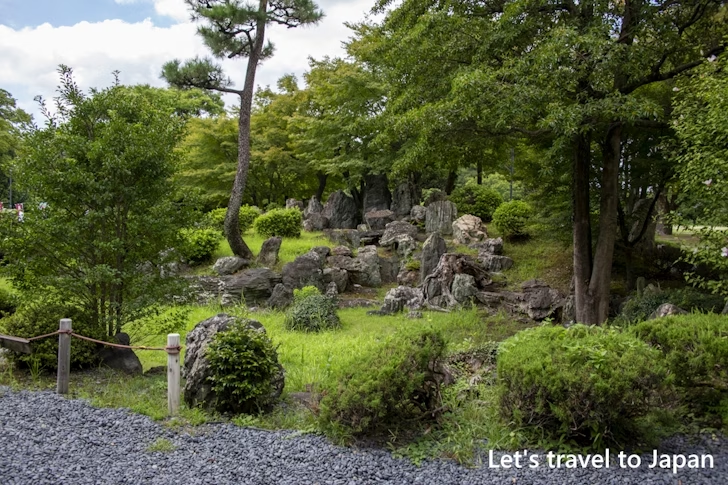
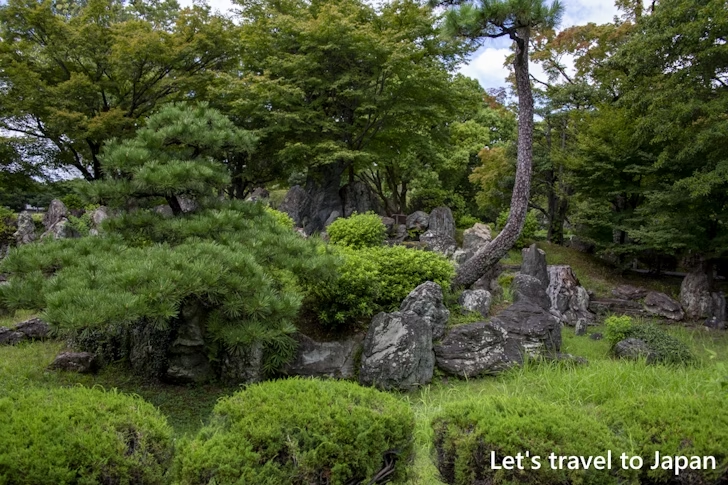
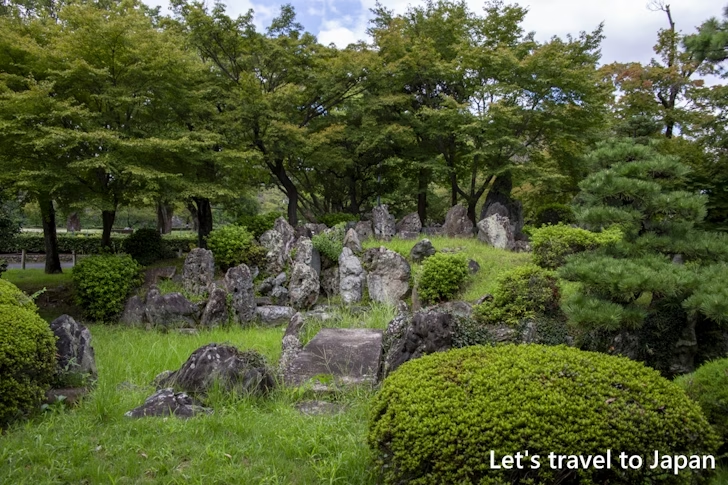
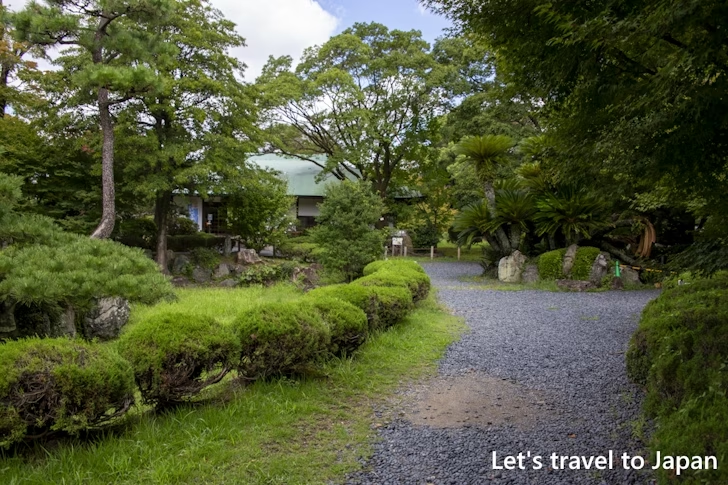
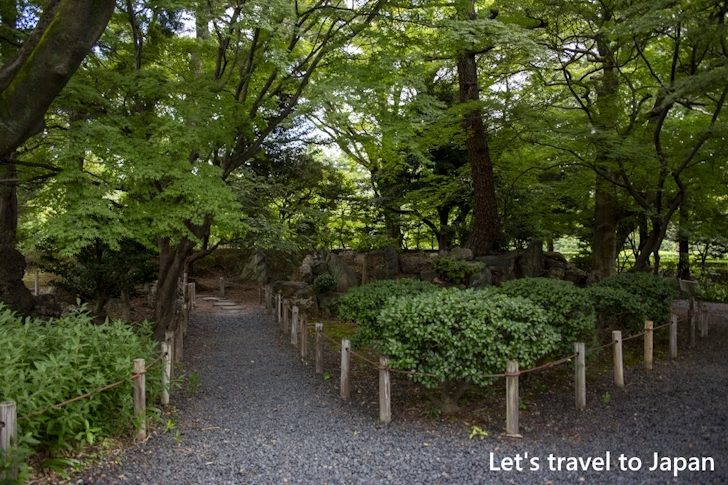
Ninomaru East Garden
The Ninomaru East Garden was originally part of the garden complex of the Ninomaru Palace, along with the Kitaoniwa and others. However, during the Meiji era, it was filled in for use by the army. Later, in the Showa era, after conducting excavations based on old drawings, the garden was restored and reopened as the Ninomaru East Garden.
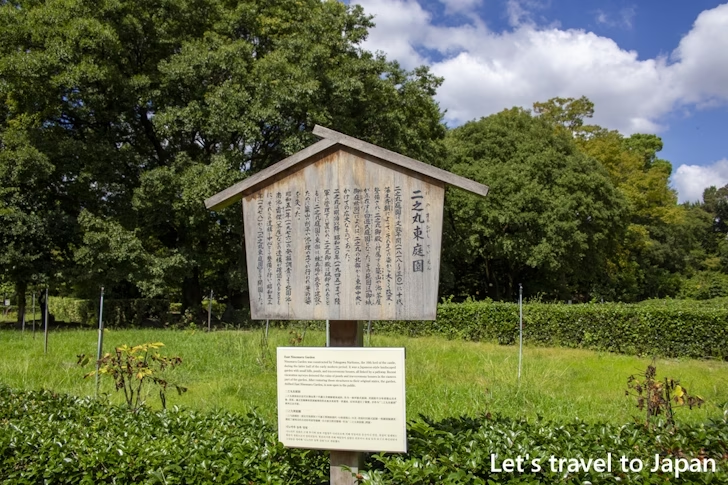
Minamiike
This is Minamiike. It is said that there used to be a boat floating there, and a large boat-shaped monolith.
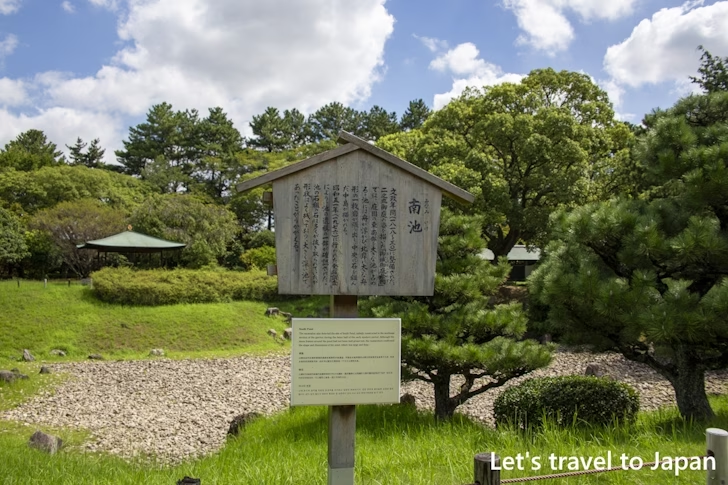
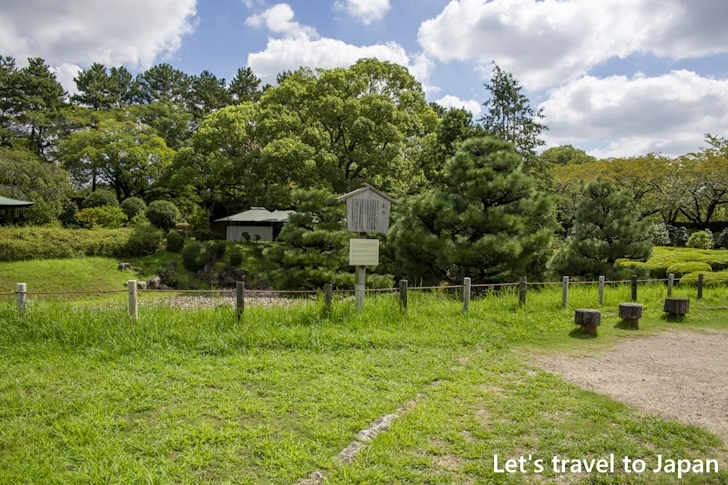
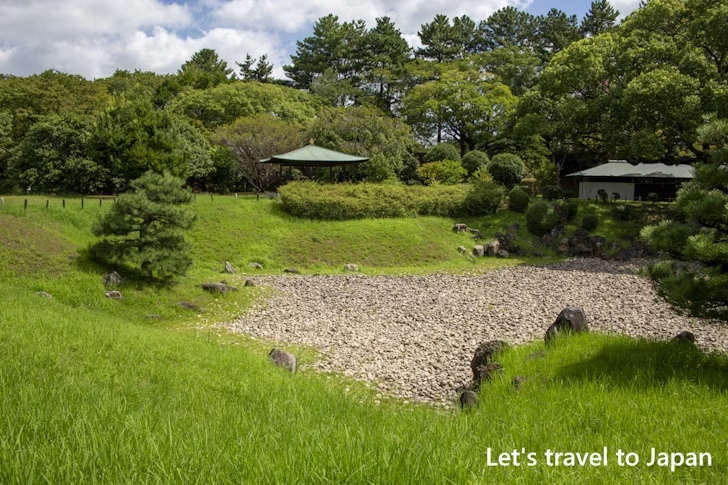
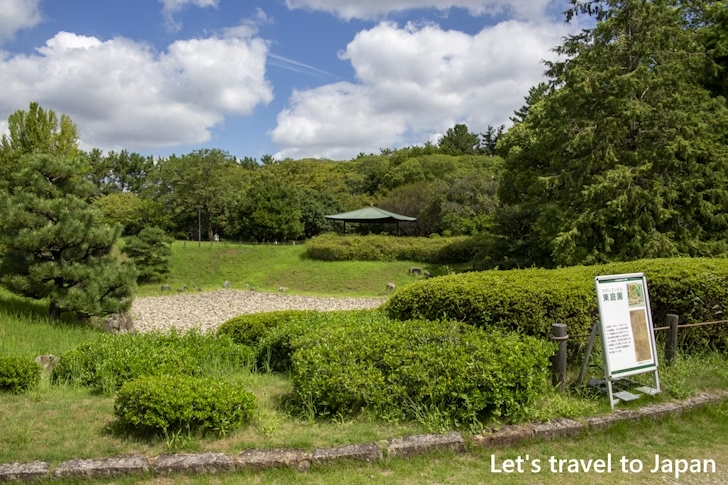
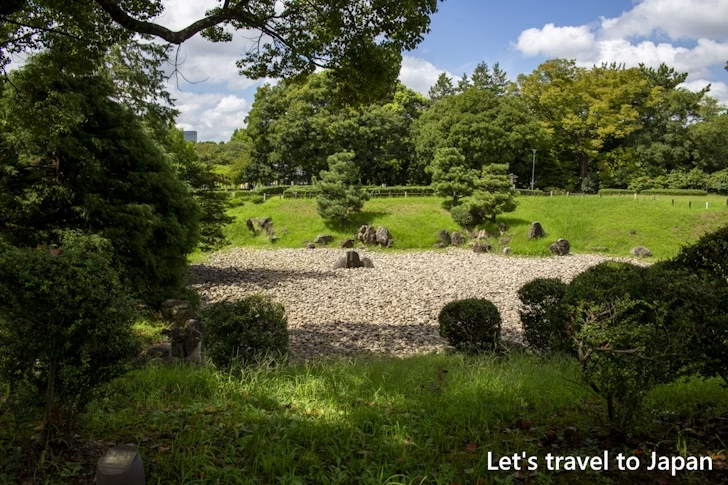
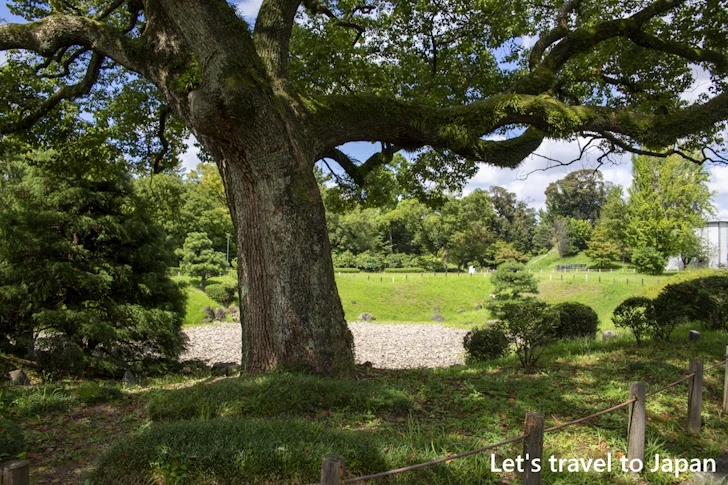
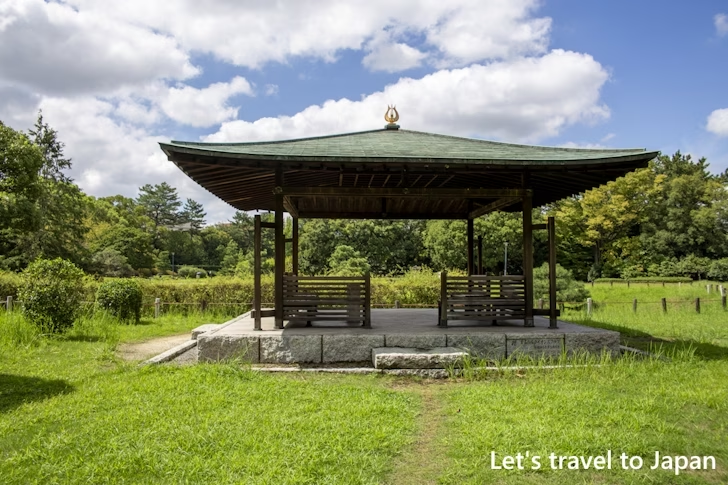
Souketsuato
Souketsuato is the site of one of the six teahouses that existed in the East Garden.
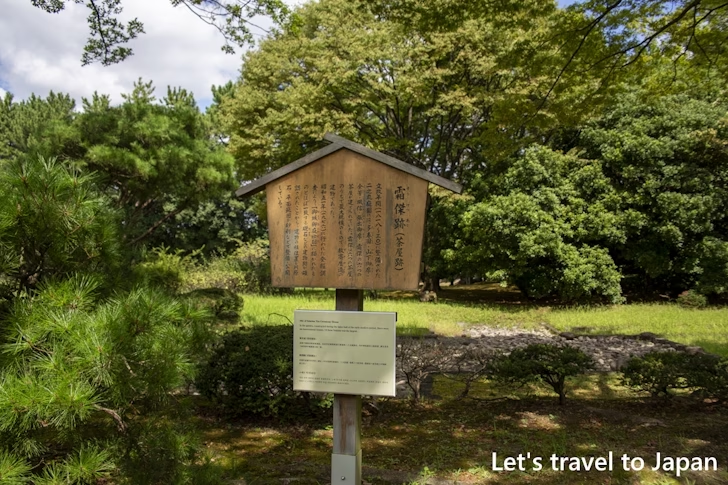
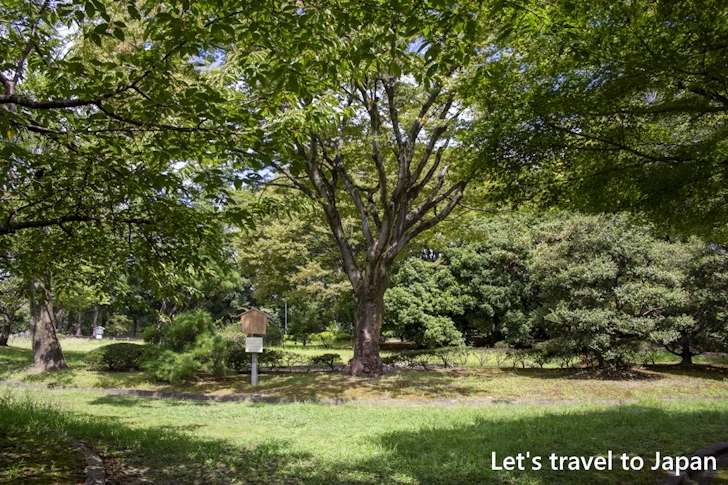
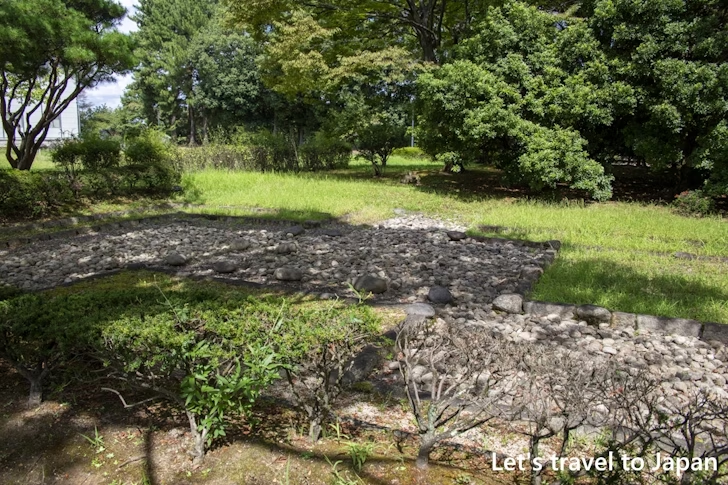
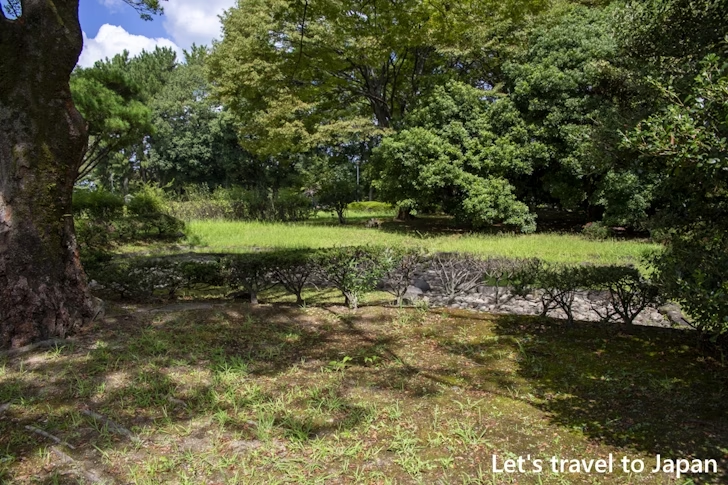
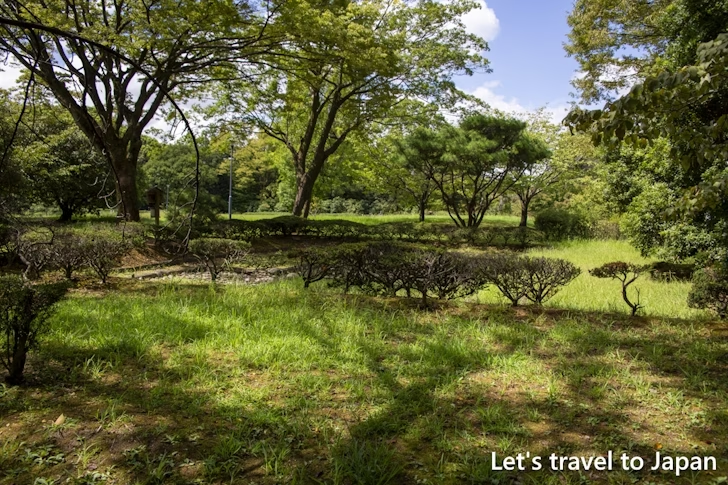
Kita-Ankyo
This is the remains of the Kita-Ankyo. An Ankyo is a waterway buried underground, and it seems that one that was used as a drainage channel for a garden was discovered during excavations.
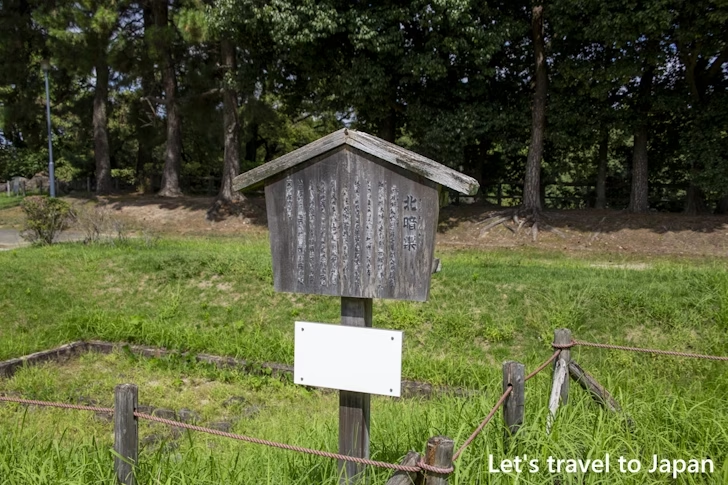
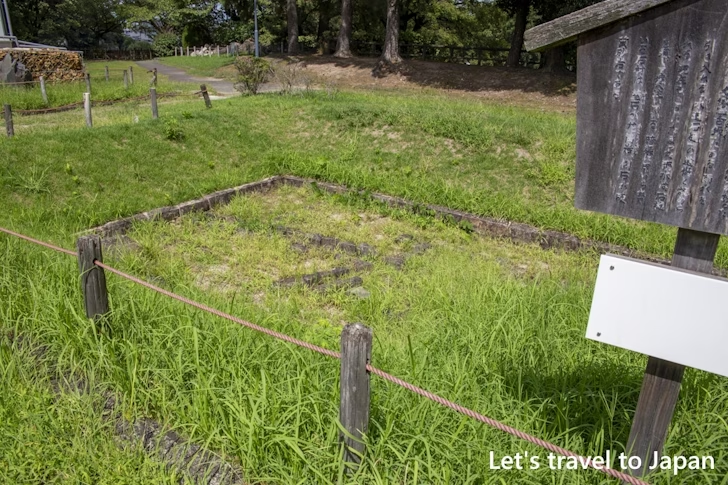
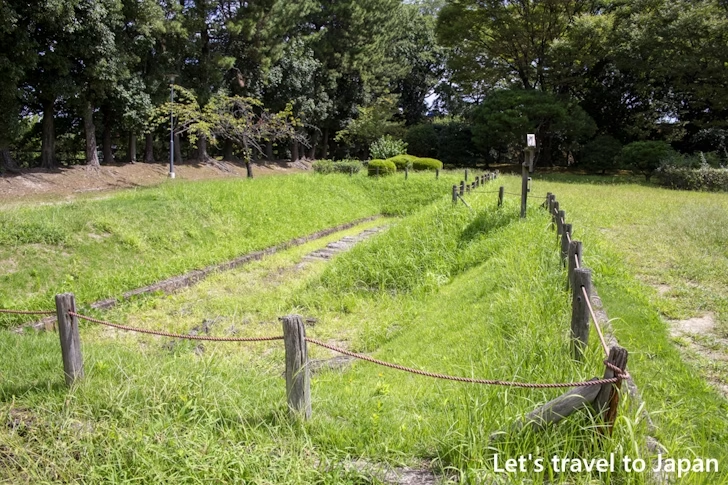
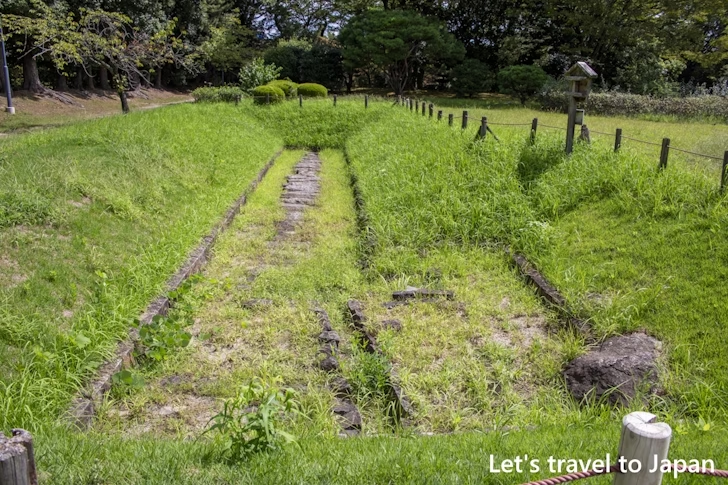
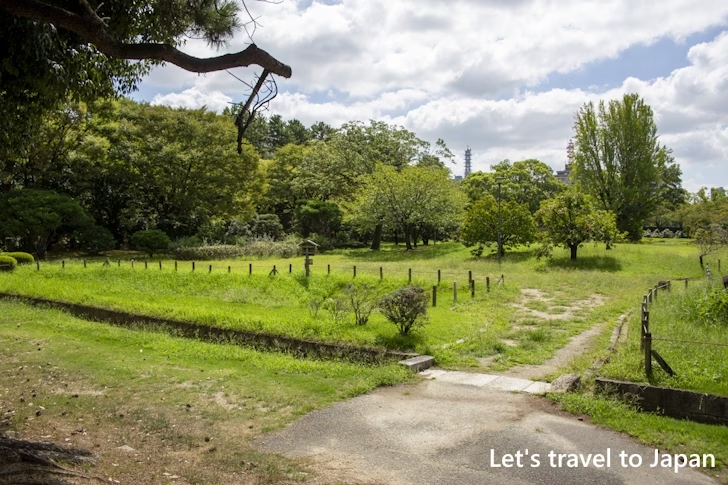
Ninomaru Teahouse
Inside Ninomaru Garden, there is Ninomaru Teahouse where you can enjoy matcha tea and Japanese sweets. You can take a break while looking at the view of Ninomaru Garden.
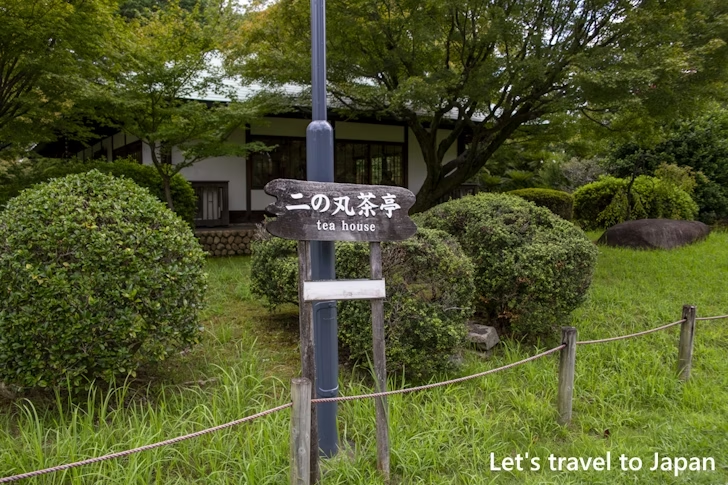
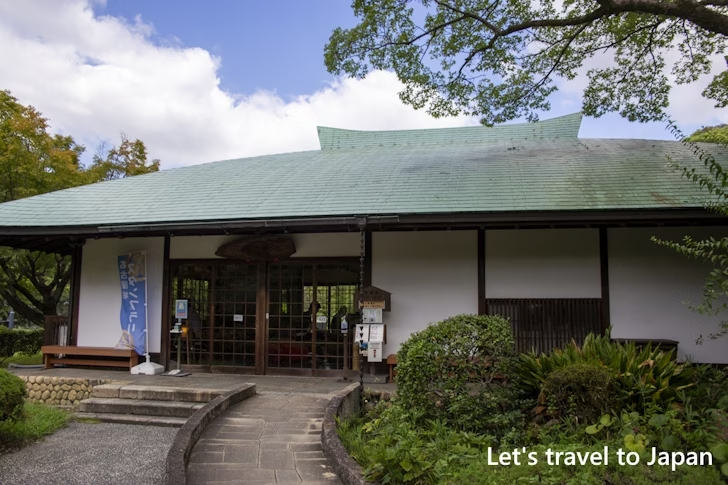
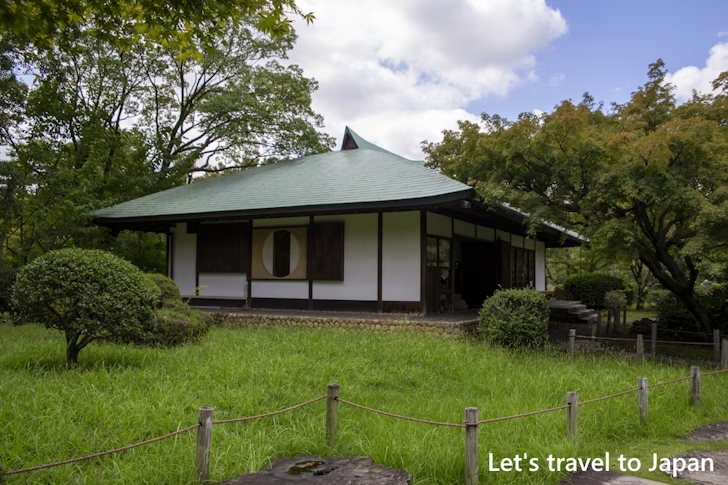
If you go around the back of Ninomaru Teahouse, you will find Suikinkutsu. Even if you don't use Teahouse, you can experience it, so please give it a try.
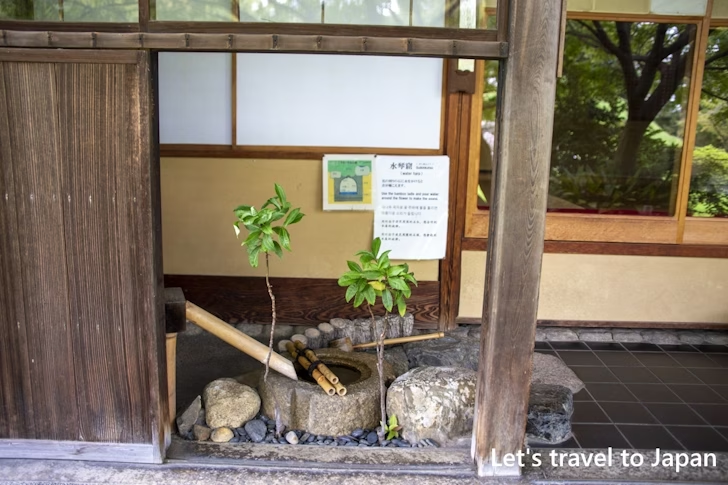
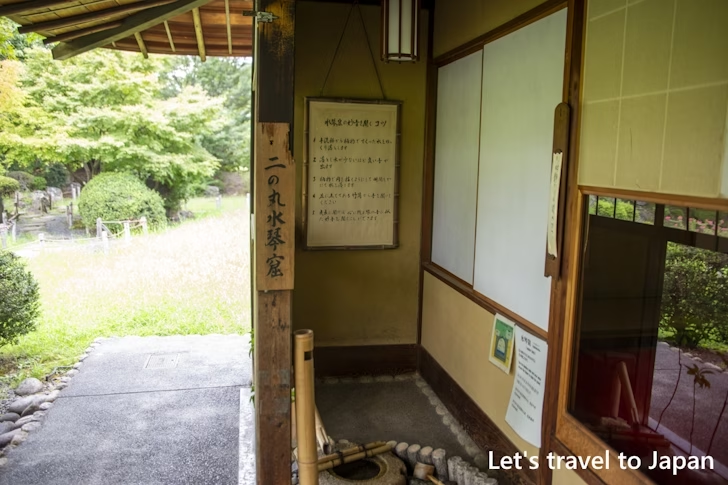
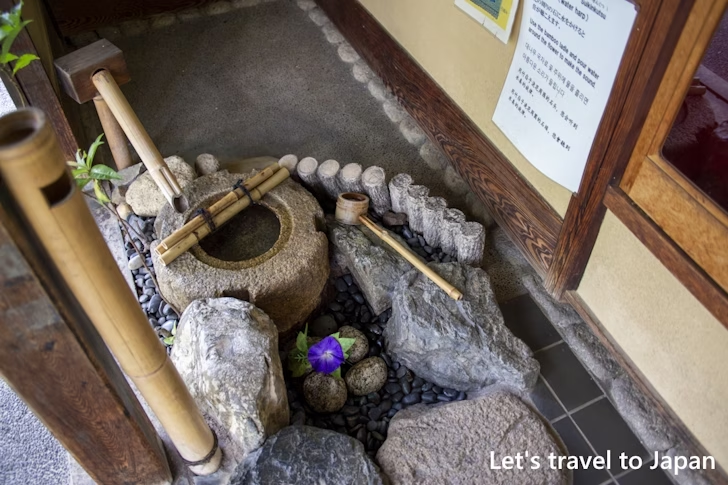
Nanban Tataki Teppozama
At the northern end of the Kitaoniwa stone wall, there are Nanban Tataki Teppozama. A Teppozama is a hole in the castle wall or similar structures, created to shoot firearms at enemies from the outside.
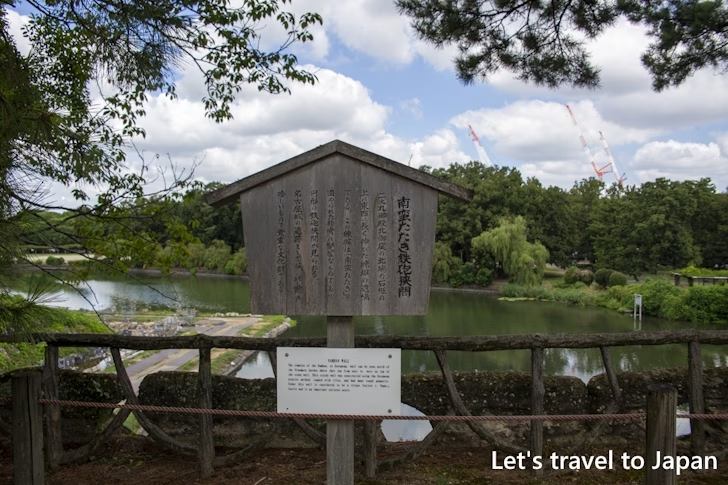
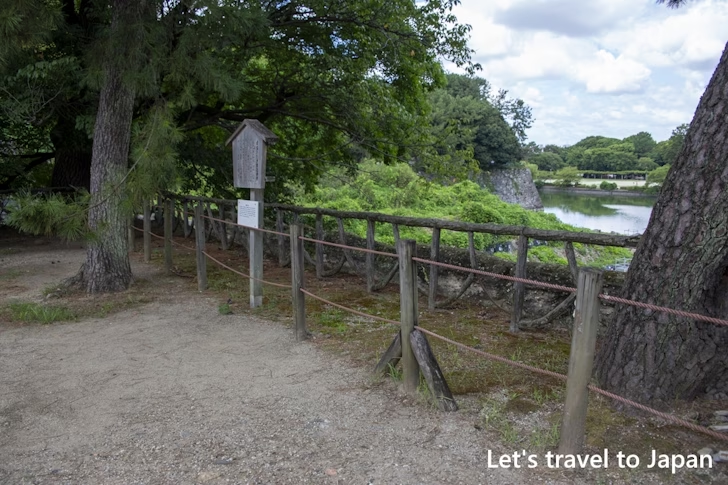
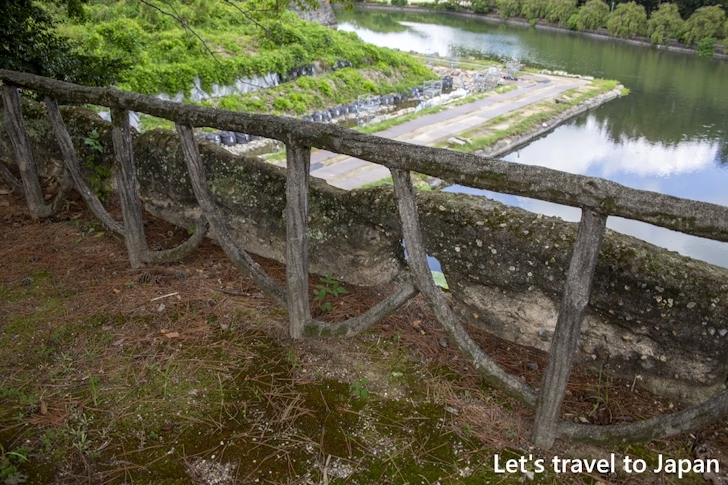
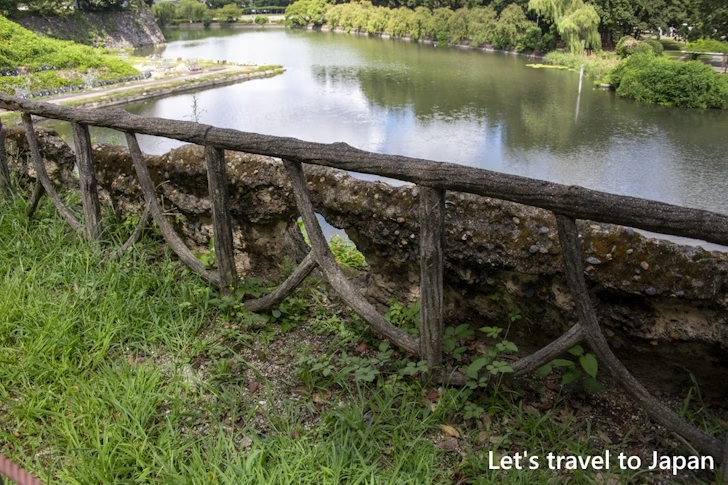
Clan Secret Military Teachings Monument
The Clan Secret Military Teachings Monument is inscribed with the phrase 'matters conducted in accordance with the royal command'. These words were written by Tokugawa Yoshinao, the first lord of Nagoya Castle, in his book 'Gunsho Gokan', and they appear at the end of the volume. They pertain to the spirit of loyalty to the emperor.
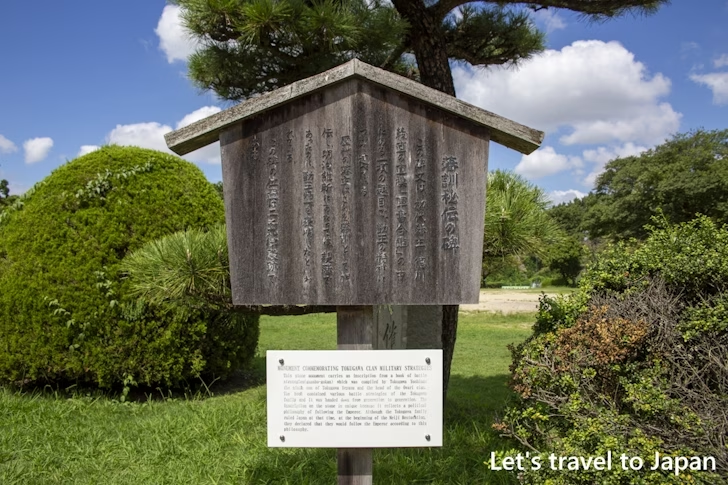
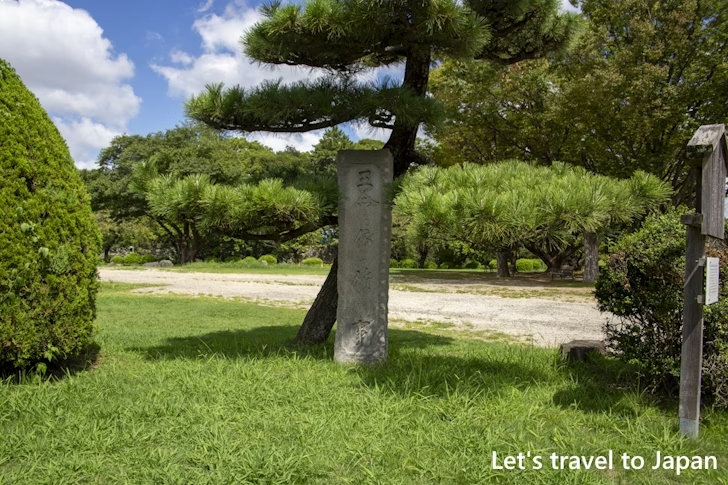
Old Nagoya Castle Site
Where Nagoya Castle currently stands, there used to be Old Nagoya Castle. Old Nagoya Castle was built in 1521 by Imagawa Ujichika. Later, it was seized by the Oda clan and briefly became Nobunaga's castle before falling into ruin. Nagoya Castle was constructed by Tokugawa Ieyasu on the site of the Old Nagoya Castle.
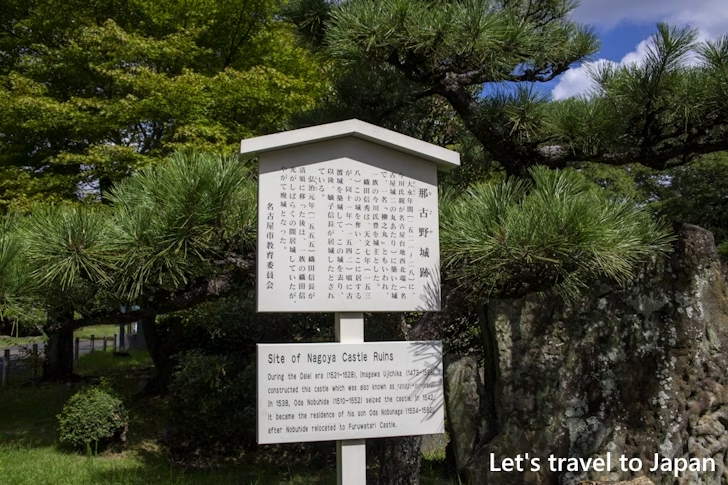
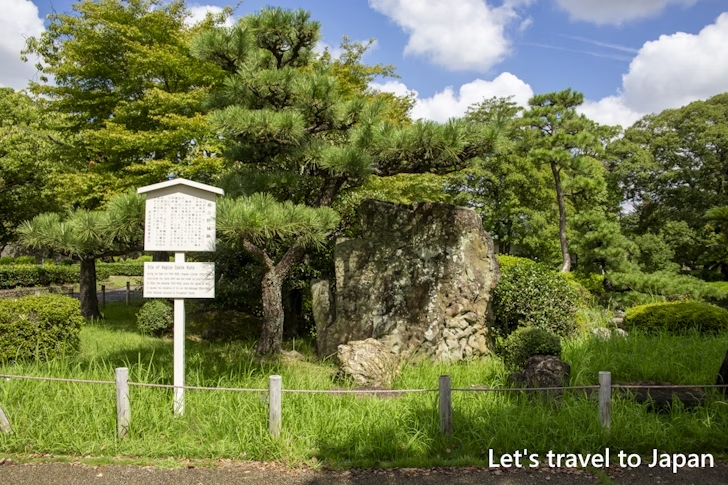
List of photos related to Nagoya Castle Ninomaru Garden
Please see below for a list of photos related to Nagoya Castle Ninomaru Garden.
-- --
Thank you for reading to the end.
( Written by Tatsuo Ikura )